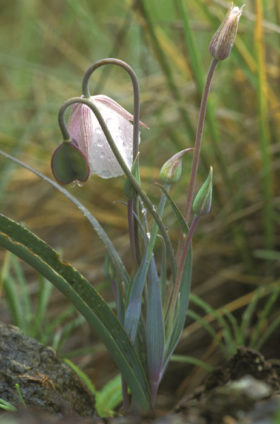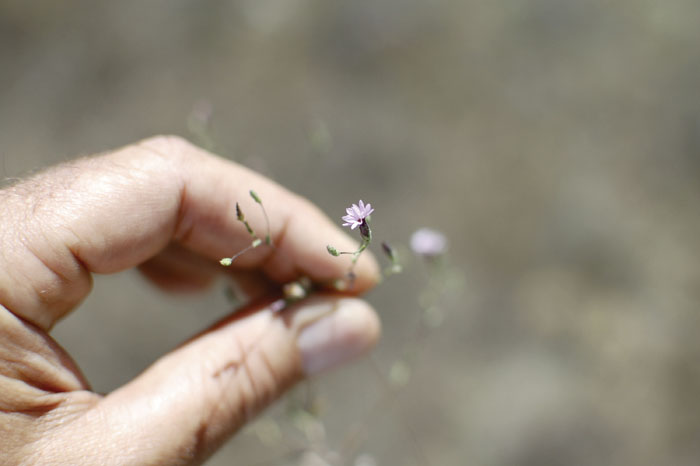If William Kent was a kind of godfather to preservation on Mount Tamalpais, its godmother might be the eminent botanist, Kent family acquaintance, and indefatigable hiker Alice Eastwood.
Remember, they are an exotic species in the Western United States, and are rapidly increasing their geographic range and range of habitats. Are they outcompeting or excluding native species in the process? How would we know? We have done almost nothing to monitor changes in the assemblage of mushroom species in areas before and and after the incursion of death caps.
Further Reading
Pringle et al, “The ectomycorrhizal fungus Amanita phalloides was introduced and is expanding its range on the west coast of North America,” Molecular Biology 2009
Lockhart et al, “Simultaneous emergence of multidrug-resistant Candida auris on 3 continents confirmed by whole-genome sequencing and epidemiological analyses,” Clinical Infectious Diseases 2017
Battalani et al, “Aflatoxin B1 contamination in maize in Europe increases due to climate change,” Scientific Reports 2016
Mount Tamalpais: A Mountain of Stories

A Mountain of Stories was produced by Bay Nature magazine with the generous support of the Tamalpais Lands Collaborative for publication in the October-December 2017 issue of the magazine. Read more stories from the mountain:
- Meet Mount Tamalpais, by John Hart
- Nature and Culture Mix in a Theatre Among the Oaks, by Claire Peaslee
- The Nature of the Dipsea Race, by Alisa Opar
- Alice Eastwood and the Plants of Tamalpais, by John Hart
- On the Hunt for Mount Tam’s Two Known Badgers, by Mary Ellen Hannibal
- Snorkel Surveys Reveal the World of Mount Tam’s Creeks, by Ariel Rubissow Okamoto
Born in Toronto in 1859, transplanted in her teens to Denver, Eastwood developed her passion for plants without much formal education. She was already well known in botanical circles when she made her first ascent of Mount Tam, on a visit in 1891, instantly falling in love with the mountain. By the next year she had moved west and was working at the California Academy of Sciences, helping to bring order to its incipient chaotic collection of plant specimens. In 1906, she rescued her precious “type collection” of 1,497 species from the academy building on Market Street in the hours between its partial destruction by earthquake and its obliteration by fire. When the academy reopened in 1912, she returned to her post as curator of botany, a position she held until she retired, in 1949, at age 90.
Though her botanical travels took her far and wide, Eastwood retained a special fondness for Tamalpais. Every Sunday, she and assorted friends would take the ferry and train from the city to the mountaintop, hike, cook lunch at Rock Springs on the ocean end of the summit ridge, hike some more, and return to the summit station in time for the six o’clock descent. A four-mile-an-hour walker when there was a train to catch, she was welcomed into the all-male Cross-Country Club as an “associate member.” She and several trail-wise companions were dubbed the “Hill Tribe.”
Always she was botanizing, describing her finds technically for one kind of reader and in clear and lively language for another. Some of her popular writings about Tam plant life were collected in a still-illuminating booklet published by the Tamalpais Conservation Club, of which she (along with William Kent) was a charter member.
One of her special local interests was the manzanita genus; she described nine species in Marin County, including five on the mountain. Another fascination was the plants that grow on the serpentine substrates that occur in streaks and patches along the mountain mass. Serpentine-derived soils, poor in calcium and high in magnesium and heavy metals, discourage most plants, yet provide a special niche for some, including the rare Sargent cypress, the leather oak, and the Mount Tamalpais manzanita, an Eastwood discovery.
For the modern managers of Mount Tamalpais, Alice Eastwood is both an inspiration and a vital source of information. Her notebooks are still at the Academy of Sciences; her work of a century ago forms a baseline for all later assessments of the health and vitality of Tam’s plant life.

One of those modern custodians is Andrea Williams of the Marin Municipal Water District (MMWD). On a cool spring day not long after late winter rains, she leads me to the broad back of Pine Mountain, the ridge that faces Tamalpais proper across the deep trough of the Lagunitas Creek valley. We stop in a section of sparse vegetation, an almost-desert place, drab perhaps to a hasty and untrained eye.
Andrea’s eye, patient and trained, is finding a world of rarities. Easy to spot are two of Eastwood’s specialties, the Mount Tamalpais manzanita (Arctostaphylos montana ssp. montana) and the leather oak (Quercus durata).
Underfoot is a wash of pale pink Calochortus umbellatus, the Oakland mariposa lily. “This is a great year for it,” Williams says. Like many rarities, this one was hard to find during the recent drought and hardly appeared at all in the spring of 2014.

Here is Mount Tamalpais lessingia (Lessingia micradenia var. micradenia), a light purple flower of the daisy family. “It’s a rare species that’s extremely common here,” Williams says. “There are thousands of them here—and that’s it.”
In a few steps we move from the merely severe to a seemingly lifeless zone of rock outcrops. Serpentinite boulders don’t even support much lichen. But right on the margin is a whole field of purple, orchid-like Mount Tamalpais jewelflowers, a subspecies of Streptanthus glandulosus. She bends for a photograph; I shift position to provide a shadow. Serpentine landscapes are bright.
Green flags here and there mark the spots where exotic weeds have been pulled. Serpentine communities, like others, are prey to intruders from similar Old World landscapes. Here among the jewelflowers is one that was missed: a stalk of barbed goatgrass. Williams pulls on one glove to tug it out of the ground. Silica-rich hairs on the leaves will cut your hands.
Three weed-pullers have been working downslope, near the line where a sudden wall of woods shows the change to more hospitable soils. They are professionals employed by the water district. With the arrival of the One Tam initiative, Williams notes, “more people are doing this kind of work.” “We’ll be back tomorrow,” they call.
“We’ll be back tomorrow” could be the motto of the Tamalpais Lands Collaborative. It’s a work that can never end.
Since she joined the MMWD staff in 2009, Williams has been working to redo a rare plant survey last updated a quarter-century ago. Her data fed into last year’s big study, “Measuring the Health of a Mountain”; she hopes this year to complete this latest link in the chain of inventories going back to Eastwood.
She is also pursuing a study on “serpentine endemic occupancy.” The populations of these serpentine forbs vary widely from year to year. “Lessingia may be here in the thousands, tens of thousands, or hundreds of thousands.” How alarmed should we be when counts are low? Perhaps not very. Many scarce species have returned in force with the rains. Pending further work, the state of the serpentine landscapes, which occupy a tiny fraction of the One Tam area but have a much larger share in its biodiversity, can be assessed as good.
“I kind of laugh at being called a descendant of Alice Eastwood,” Williams says. But like her predecessor, she is not hesitant to stick her neck out about conditions on the mountain. “We like to make bold but qualified statements.” Some won’t do that. There is value in “being able to not be afraid to be wrong.”



-300x230.jpg)